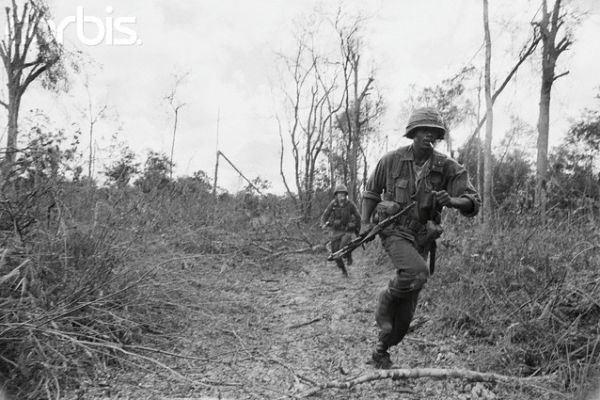Most important, the removal of United States forces gave the communists a welcome breathing space, allowing them to concentrate on political efforts. In the initial period after the signing of the agreement, the party leadership viewed armed struggle as a last resort only because it was feared that the United States might reintroduce its forces. PLAF troops were instructed to limit their use of force to self-defense .
Meanwhile, the Thieu government embarked on pacification efforts along the central coast and in the Mekong Delta, which resulted in a reduction of the area under official communist control to about 20 percent of the South. The Saigon government, however, faced serious difficulties, including the negative effect on the economy of the withdrawal of United States forces and a critical refugee problem. During the course of the war, several million Vietnamese had been evacuated or had fled from their villages to find safety and jobs in urban areas. Most of these remained unemployed and, together with militant Buddhist groups, the Cao Dai, and the Hoa Hao, represented a sizable wellspring of discontent with the Thieu government.
In early 1974, the communists launched a campaign to regain the territory they had lost since the cease-fire. Raids were conducted on roads, airfields, and economic installations; the flow of supplies and equipment from the North was stepped up; and a 19,000-kilometer network of roads leading from the DMZ in Quang Tri Province to Loc Ninh, northwest of Saigon, was completed. By summer the communists were moving cautiously forward, seizing vulnerable areas in the Central Highlands and in the provinces around Saigon.
There was no direct response from the United States, and the resignation of Nixon in August convinced the party leadership that further United States intervention was unlikely. ARVN forces continued to deteriorate, suffering high casualties and facing a lack of ammunition and spare parts. The party leadership met in October to plan a 1975 military offensive concentrating on the Cambodian border area and the Central Highlands. The taking of the Phuoc Lang province capital, Phuoc Binh (now Ba Ra in Song Be Province), in early January was followed by a surprise attack in March on Ban Me Thuot, the largest city in the Central Highlands. President Thieu ordered ARVN units at Pleiku and Kontum to leave the highlands and withdraw to the coast to regroup for a counter attack on Ban Me Thuot. The ARVN strategic withdrawal became a rout, however, because PAVN units had already cut the main roads to the coast and fleeing civilians clogged the secondary roads as panic ensued. By the end of March, eight northern provinces had fallen to the communist forces, including the cities of Hue and Da Nang.
Buoyed by this stunning victory, the party leadership directed the commander of revolutionary forces in the South, General Van Tien Dung to prepare for an offensive against Saigon. In early April, PAVN and PLAF troops moved south and began an encirclement of the capital. On April 20, after ten days of stiff resistance, the ARVN Eighteenth Division, stationed thirty kilometers north of Saigon, finally crumbled under the attack of three PAVN divisions. With Saigon in a state of panic, President Thieu resigned the following day and was replaced by Vice President Tran Van Huong. Duong Van Minh, thought to be more acceptable to the communists, took over the presidency on April 28. The communists refused to negotiate, however, and fifteen PAVN battalions began to move toward Saigon. On April 30, communist forces entered the capital, and Duong Van Minh ordered ARVN troops to lay down their arms.
Nearly thirty years had passed since Ho Chi Minh first declared Vietnam's independence as a unified nation in September 1945. In the interim, an entire generation of Vietnamese had endured a divided Vietnam, knowing only continuous warfare. The events of April 1975 not only abruptly concluded the war but also prepared the way for the official reunification of the country the following year, when the Vietnamese people were brought together under one independent government for the first time in more than a century.




